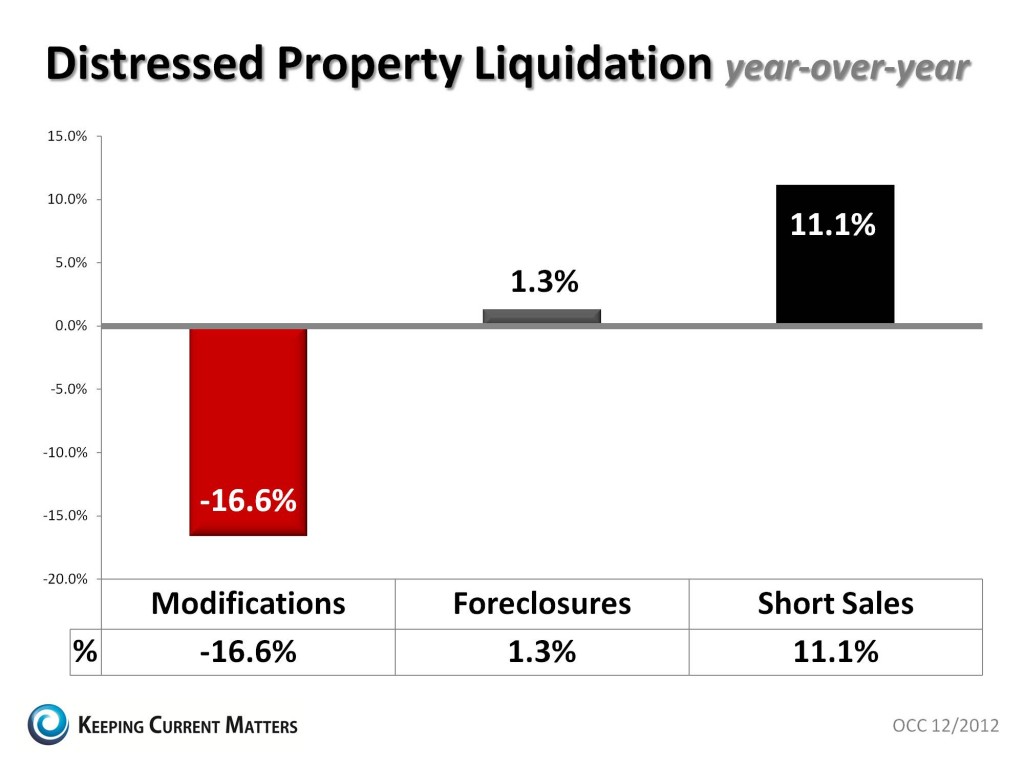Archives for January 2013
The History of the Internet
First-time Home Buyers Face Greater Competition
 First-time home buyers are playing a larger role in the housing market, but they’re finding big changes.
First-time home buyers are playing a larger role in the housing market, but they’re finding big changes.
Thirty-nine percent of home sales nationwide were from first-time home buyers during the 12-month period ending June 2012, according to the National Association of REALTORS®. That’s up from 37 percent a year earlier.
But while first-time home buyers once had a huge inventory of homes to choose from, now they’re finding tightened supplies and steeper competition for what’s left.
Housing inventories are hovering at record lows in many markets, limiting supply. First-time home buyers face increased competition from investors, who are often trying to snatch up the same bargain-priced housing deals. Investors often make all-cash offers, too, which makes it difficult for buyers requiring financing to compete against them. Also, banks have tightened up their underwriting standards, creating more hoops in just qualifying for financing.
It’s not easy to be a first-time home buyer, some say. But first-time home buyers are critical to a healthy housing market. They allow existing home owners to sell and trade up into larger homes.
To respond to the changing housing market, first-time home buyers may need to broaden their search and be more “flexible and compromise,” says Chip Rowand, a Broward County, Fla., real estate professional.
Also, first-timers shouldn’t automatically settle for a Federal Housing Administration mortgage due to the low down payment requirements (usually 3.5 percent of the purchase price). The FHA can have several restrictions that makes some sellers prefer buyers who offer cash or who are using conventional loans, says Stephen B. McWilliam, president of Greater Fort Lauderdale (Fla.) REALTORS®. Some conventional loans require just 5 percent down and so may serve as an option for first-timers.
First-timers also need to be able to act fast and be able to have their financing processed quickly if they are going to stay competitive. Some banks won’t sign off on mortgages for eight to 12 weeks. But some sellers won’t wait that long. Some housing experts suggest first-timers look into working with a community bank or local mortgage banker, which often don’t have as long a wait.
Source: “First-time Home Buyers May Have to Compromise,” Sun Sentinel
PULL-DOWN BUNK BED | BY GIULIO MANZONI
 If you are struggling with space and are familiar with all the problems that small homes create, or your vacation home needs a solution for visitors, this might sound good. The Lollisoft Bunk Pull-Down Bed is an innovative and elegant design by Giulio Manzoni, the clever space saving system is a wall bunk bed that disappears into the wall when not in use. Both beds work independently according to your needs.
If you are struggling with space and are familiar with all the problems that small homes create, or your vacation home needs a solution for visitors, this might sound good. The Lollisoft Bunk Pull-Down Bed is an innovative and elegant design by Giulio Manzoni, the clever space saving system is a wall bunk bed that disappears into the wall when not in use. Both beds work independently according to your needs. 




Stacked Concrete House Uses Space in Surprising Ways
 Clever stacking of oddly-shaped interior volumes inside a clean black-and-white facade gives the T-House by Atelier Boronski a grand sense of space that defies its small footprint. Limited by building regulations in the city of Kyoto, the architects chose an unconventional solution that has resulted in a dramatic triple-height living volume and hidden nooks for two terraces, a reflection pool and a spacious spa-like bathroom.
Clever stacking of oddly-shaped interior volumes inside a clean black-and-white facade gives the T-House by Atelier Boronski a grand sense of space that defies its small footprint. Limited by building regulations in the city of Kyoto, the architects chose an unconventional solution that has resulted in a dramatic triple-height living volume and hidden nooks for two terraces, a reflection pool and a spacious spa-like bathroom.
 Various private rooms have been inserted inside the static main volume of the house, staggered and stacked throughout the space to create multiple levels. These volumes protrude beyond the shell, pushing windows outward to let in as much sunlight as possible. Their separateness is emphasized with contrasting external cladding in white plaster and black timber.
Various private rooms have been inserted inside the static main volume of the house, staggered and stacked throughout the space to create multiple levels. These volumes protrude beyond the shell, pushing windows outward to let in as much sunlight as possible. Their separateness is emphasized with contrasting external cladding in white plaster and black timber.
 The home gets extra curb appeal from a louvered black screen that hides a garage door. Inside, raw concrete walls offer a bit of texture as well as an appealing sense of minimalism, helping all of the disparate shapes blend together into a cohesive and harmonic whole.
The home gets extra curb appeal from a louvered black screen that hides a garage door. Inside, raw concrete walls offer a bit of texture as well as an appealing sense of minimalism, helping all of the disparate shapes blend together into a cohesive and harmonic whole.
 The common areas of the home are wide open like an atrium, a cantilevered staircase sweeping from the ground floor up to the third level. The two main bedrooms act as bridges through the void space of the home. On the third floor is a guest bedroom with its own terrace and a ‘viewing platform’ that allows guests to peek into the main space of the home below, and out into the city.
The common areas of the home are wide open like an atrium, a cantilevered staircase sweeping from the ground floor up to the third level. The two main bedrooms act as bridges through the void space of the home. On the third floor is a guest bedroom with its own terrace and a ‘viewing platform’ that allows guests to peek into the main space of the home below, and out into the city.Shadow Inventory and Its Impact on Prices
 Many analysts differ on what impact shadow inventory will have on house values in 2013. Some warn that these distressed properties will still play a major role in limiting appreciation. Others believe that the increases in buyer demand will more than offset the increase in supply. The only thing on which everyone agrees is that there will be millions of distressed properties that will need to be liquidated over the next few years. How these properties are handled will have an effect on the impact they will have on values.
Many analysts differ on what impact shadow inventory will have on house values in 2013. Some warn that these distressed properties will still play a major role in limiting appreciation. Others believe that the increases in buyer demand will more than offset the increase in supply. The only thing on which everyone agrees is that there will be millions of distressed properties that will need to be liquidated over the next few years. How these properties are handled will have an effect on the impact they will have on values.
According to the National Association of Realtors, foreclosures sell at a 20% discount while a short sale sells at a 16% discount. Therefore, a short sale has less of a negative impact on prices compared to a foreclosure. Obviously, if the mortgage is modified, no sale takes place and there is no impact on surrounding home prices.
The U.S. Treasury Department just issued their latest OCC Mortgage Metrics Report which reports on how these distressed properties are currently being handled. Here is a graph showing how these properties are being processed now as compared to a year ago.
 source: KCM
source: KCM
U.S. Census, HUD Release American Housing Survey
 The U.S. Census Bureau and HUD recently released the 2011 American Housing Survey, a biennial comprehensive national housing survey that provides data on housing inventories, demographics, home improvements, mortgages, and more.
The U.S. Census Bureau and HUD recently released the 2011 American Housing Survey, a biennial comprehensive national housing survey that provides data on housing inventories, demographics, home improvements, mortgages, and more.
The 2011 survey indicates that almost 20 percent of new home owners chose their neighborhood based on convenience to the workplace.
The poll of the nation’s 115 million occupied homes also reveals the median size of single-family detached and mobile residences to be 1,800 square feet — versus 2,200 square feet for newly built homes — and the median year of construction for owner-occupied units to be 1976.
Sixty-four percent of homes have three or more bedrooms and 52 percent have two or more bathrooms. In terms of accessibility, 64 percent have floors with no steps between rooms, 48 percent have entry-level bathrooms, and 36 percent have entry-level bedrooms.
The survey also found that 20 percent of recent movers located their current homes through a real estate agent, 17 percent through Realtor.com, and 16 percent by word-of-mouth. Additionally, households spend about 24 percent of their household income on housing.
This data and more is now available for the first time through the U.S. Census Bureau’s American FactFinder data access tool.
Source: “HUD and Census Bureau Expand Access to Include Housing Info” National Mortgage Professional
Bellevue could see another boom
 It’s been a little over four years since downtown Bellevue has seen an office tower go up. The 15-story Summit III project was left unfinished in 2009 when the recession hit. But some developers believe that this Eastside hub will soon become the site of large-scale construction, reports the Seattle Times.
It’s been a little over four years since downtown Bellevue has seen an office tower go up. The 15-story Summit III project was left unfinished in 2009 when the recession hit. But some developers believe that this Eastside hub will soon become the site of large-scale construction, reports the Seattle Times.
Five residential projects with more than 1,100 units and three office towers featuring 1.5 million square feet are in the works for 2013. Kemper Development plans to expand Lincoln Square by building two office towers to create additional office and retail space as well as a 120-room hotel and 200 condos or apartments. CEO Kemper Freeman says that construction should start in the early summer.
Demand for living and office space in the region is on the rise, and developers are focusing on downtown Bellevue, with its relatively low office-vacancy rate, as a site for construction. There’s growing concern that Seattle neighborhoods are getting overbuilt. Traffic, tolls on Highway 520, and talk of additional tolls on other roadways are causing commuters to consider living in the city where they work.
Lisa Picard, executive vice president of developer Skanska USA, says that the Bellevue “has really developed into an urban center.” The second largest city center in Washington made CNN Money’s 100 Best Places to Live list for 2011. What used to be a suburban business district has transformed itself into an urban destination with retail shops, restaurants, and cultural amenities.
Inflation Since 1775 And How It Took Off In 1933
 Yesterday at the American Economic Association’s 2013 Annual Meeting, Carmen Reinhart and Ken Rogoff offered a paper titled Shifting Mandates: The Federal Reserve’s First Centennial.
Yesterday at the American Economic Association’s 2013 Annual Meeting, Carmen Reinhart and Ken Rogoff offered a paper titled Shifting Mandates: The Federal Reserve’s First Centennial.
The paper included a cool chart of inflation since 1775. The authors argue that inflation didn’t take off until the U.S. went off the gold standard in 1933.
From the paper:
It is probable that in 1913, while financial panics were not uncommon, high inflation was still largely seen by the founders of the Fed as a relatively rare phenomenon associated with wars and their immediate aftermath. Figure 1 plots the US price level from 1775 (set equal to one) until 2012. In 1913 prices were only about 20 percent higher than in 1775 and around 40 percent lower than in 1813, during the War of 1812. Whatever the mandates of the Federal Reserve, it is clear that the evolution of the price level in the United States is dominated by the abandonment of the gold standard in 1933 and the adoption of fiat money subsequently. One hundred years after its creation, consumer prices are about 30 times higher than what they were in 1913. This pattern, in varying orders of magnitudes, repeats itself across nearly all countries.
source: BusinessInsider
Budgeting: A Visual Guide to How Small Cutbacks Lead to Great Savings
 Budgeting doesn’t have to be hard.You don’t even need to be tied down to the idea of “making a budget.” Saving money can be as simple as making a few small changes at home. This infographic shows you easy, convenient ways to save up to $8,800 a year, without ever feeling the pinch of a restrictive budget.
Budgeting doesn’t have to be hard.You don’t even need to be tied down to the idea of “making a budget.” Saving money can be as simple as making a few small changes at home. This infographic shows you easy, convenient ways to save up to $8,800 a year, without ever feeling the pinch of a restrictive budget.

